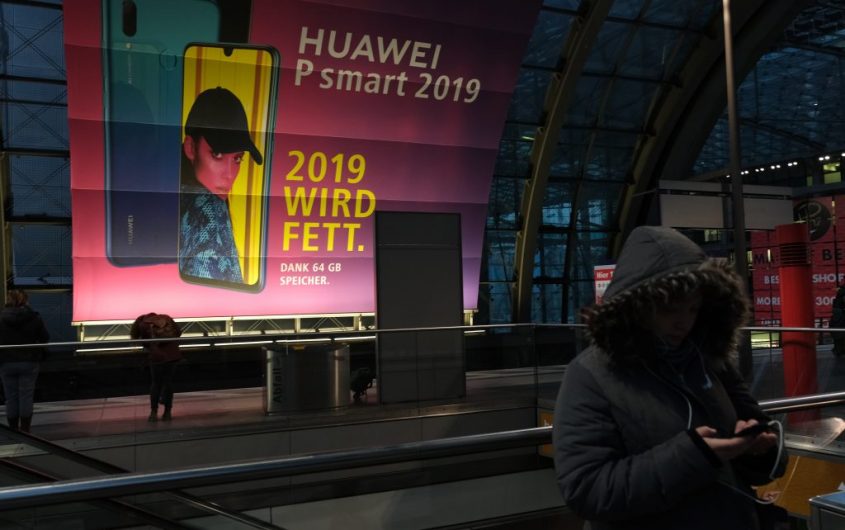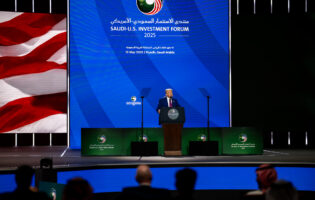
Sean Gallup via Getty Images
More Than a Choice between Huawei or U.S.: The Cost for Europe’s Pursuit of 5G

Yixiang Xu
China Fellow; Program Officer, Geoeconomics
Yixiang Xu is the China Fellow and Program Officer, Geoeconomics at AGI, leading the Institute’s work on U.S. and German relations with China. He has written extensively on Sino-EU and Sino-German relations, transatlantic cooperation on China policy, Sino-U.S. great power competition, China's Belt-and-Road Initiative and its implications for Germany and the U.S., Chinese engagement in Central and Eastern Europe, foreign investment screening, EU and U.S. strategies for global infrastructure investment, 5G supply chain and infrastructure security, and the future of Artificial Intelligence. His written contributions have been published by institutes including The Chinese Academy of Social Sciences, The United States Institute of Peace, and The Asia Society's Center for U.S.-China Relations. He has spoken on China's role in transatlantic relations at various seminars and international conferences in China, Germany, and the U.S.
Mr. Xu received his MA in International Political Economy from The Josef Korbel School of International Studies at The University of Denver and his BA in Linguistics and Classics from The University of Pittsburgh. He is an alumnus of the Bucerius Summer School on Global Governance, the Global Bridges European-American Young Leaders Conference, and the Brussels Forum's Young Professionals Summit. Mr. Xu also studied in China, Germany, Israel, Italy, and the UK and speaks Mandarin Chinese, German, and Russian.
__
German chancellor Angela Merkel announced on Tuesday that Germany will set its own security standards for a new 5G mobile network—despite fresh warning from the U.S. that inclusion of Huawei equipment in Germany’s next-generation mobile network could curtail intelligence sharing between the two countries.
This latest episode in Washington’s campaign to pressure its allies to exclude Huawei from their 5G networks highlights the difficult choice governments in Europe face in order to balance their relationships with their most important security ally on the one hand, and the most important trade partner for many, on the other. At the same time, they’re playing catch-up to implement the new technology for its promised wide-ranging economic benefits.
Are Security Risks Overblown?
The 2018 Defense Authorization Act banned Huawei and ZTE technologies from use by the U.S. government and government contractors. Other members of the Five Eyes intelligence alliance have identified potential national security risks from Huawei equipment in their communication infrastructure, with Australia and New Zealand banning Huawei from supplying equipment to their 5G mobile networks, while such measures are under review in Canada and the UK.
Although Washington continues to push for a Huawei ban, some governments in Europe believe they will be able to mitigate potential risks.
Although Washington continues to push for a Huawei ban, some governments in Europe believe they will be able to mitigate potential risks. Last week, Germany outlined its 5G security requirements following the UK’s approach to monitor and manage risks. Huawei has set up information security labs in both Germany and the UK that are intended by the company to facilitate government reviews of its source-code and network gear to reassure governments that there is no back door that would expose networks to espionage and surveillance.
But complex source code for network software could conceal system vulnerabilities from government inspectors and the need for frequent software updates in 5G networks would outpace regulatory oversight. The configuration of the 5G technology means every component of the 5G network can be accessed, raising further risks to entire IoT (Internet of Things) micro-networks, in which interrelated devices transfer data without human interactions.
The Chinese data localization requirement and broader legal obligations for network operators to cooperate with the Chinese government’s request to access data for national security purposes make it difficult for Huawei to “assure provisions for the secrecy of telecommunications and for data protection,” as stipulated in Germany’s 5G security guidelines.
Regulatory safeguards based on technical requirements will still have to rely on Huawei’s good faith. As former Australian prime minister Malcolm Turnbull put it in his warning to the UK regarding Huawei, “It’s important to remember that the threat is a combination of capacity and intent. Capacity can take years or decades to develop…but intent can change in a heartbeat.”
Read “Germany’s Grand Scheme of the Internet of Things: The Pursuit for Digitalization”
Staggering Infrastructure Costs
Much of the pushback to the U.S.’ effort to bar Huawei from allies’ 5G networks stems from concerns over higher costs for building 5G infrastructure and delay in implementing the technology. Huawei is the world’s biggest telecom equipment supplier, with 28 percent of the global market share. Deutsche Telekom, Europe’s largest telecommunications company, warned in January that excluding Huawei from the list of network equipment suppliers could add costs and delay the roll-out of the technology by at least two years.
Regulatory opposition to merger activity left Europe with a myriad of subscale networks that are too weak to pursue ambitious infrastructure projects.
European telecom companies are already less profitable than their U.S. counterparts. Regulatory opposition to merger activity left Europe with a myriad of subscale networks that are too weak to pursue ambitious infrastructure projects. Falling prices and soaring levels of traffic, partially driven by the abolition of roaming charges in the EU, squeezed the profit margin. To exacerbate the financial pressure, European carriers are paying an exorbitant amount of money to acquire 5G frequencies at government auctions, with Italy’s auction for a key frequency band in September 2018 reaping €5.8 billion.
While 5G is on the horizon, it will take time to gather momentum. Telecom companies still need to construct and test new network infrastructure and bring affordable 5G mobile devices to consumers. The millimeter wave technology of 5G, which requires much higher densities of cell towers than the current 4G technology, also posts a financial challenge to providing coverage to sparsely populated and rural areas. Many carriers that have invested heavily in VoLTE (Voice over LTE) plan to keep voice services on LTE for the foreseeable future. As a result, 4G is still going to be an important part of Europe’s communication infrastructure for a long, long time. Moreover, retrofitting the 4G network to replace Huawei equipment would impose additional heavy costs on telecom companies.
Europe Needs Effective Interventions for 5G’s Future
Making a decision on Huawei’s involvement in Europe’s 5G network infrastructure is only the first stage of addressing the bigger issue of shaping Europe’s future with the new technology. While 5G promises enormous economic and social benefits, predicting anything from 3D-printed prosthetics to wireless factory networks, business executives lack understanding of the new technology and have a hard time imagining 5G use cases. A recent survey by Accenture found that over half of surveyed executives believe there are very few things 5G will enable them to do that they can’t already do with 4G and need help imagining the future possibilities and uses of 5G.
The telecom industry stepped up to offer a service blueprint that enables network slicing with 5G networks in order to offer subnetworks that serve different business needs, ranging from VR live broadcast to IoT terminal management. But the idea has met strong opposition from net neutrality advocates in the EU. With the Body of European Regulators for Electronic Communications (BEREC) reviewing its net neutrality guidelines this year, EU regulators are already looking to bring 5G in line with net neutrality before experiments on the Global System for Mobile Communications (GSMA) network slicing proposal could take place.
Any hope of capturing even a fraction of the value 5G will eventually bring will require early and sustained intervention from both industries and governments. While corporate venture funding experiments with the new possibilities that 5G unleashes, national governments and the EU need to support research on the implementation of the technology and establish policies that encourage investment. Measures such as relaxing merger regulations in Europe and piloting 5G uses in administrative and social programs will be crucial to businesses’ readiness to scale rapidly and governments’ ability to shape global 5G rules and standards, which will ultimately decide Europe’s fortune in a 5G future.









